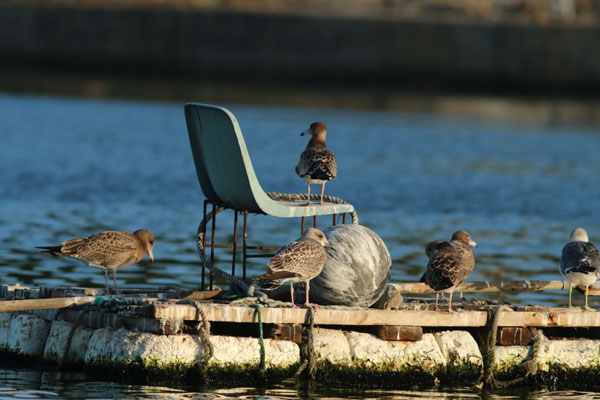 |
|
Seagulls rest on a float in the bay of Chenjia Village. [Photo by Chen Liang/China Daily]
|
The only benefit from these difficult years are a number of historical sites, many of which feature Japanese and Russian-style buildings, that can be seen in the seaside resort also known as Port Arthur. They have become major tourist attractions of Lyushun.
The Russo-Japanese War Site on Jiguan Hill (or East Crest Hill) was a battlefield during the Russo-Japanese War. It was there that the Russian army established a strong fortress-North Bastion, after Lyushun became a territory leased to Russia in 1898.
The bastion covers an area of nearly 10,000 square meters and is 496 meters in circumference. Winding entrenchments, back channels, bunkers, ammunitions, barracks and a command post remain at the site. Replicas of Russian cannons can be seen in the woods. A museum was built in 1997 to display historical materials of the war, but it is not interesting enough for a closer look.
Originally built in 1917, the Lyushun Museum is housed in an elegant European style building and spread across 25,000 square meters. Over 60,000 exhibits are displayed in 20 sections, including Japanese paintings, ancient ceramics, bronze wares and relics from the Xinjiang Uygur autonomous region. One of the best museums in Northeast China, it is worth a half-day visit. The museum grounds are also famous for their flowering cherry trees in the early spring.


























 Raymond Zhou:
Raymond Zhou: Pauline D Loh:
Pauline D Loh: Hot Pot
Hot Pot Eco China
Eco China China Dream
China Dream China Face
China Face






